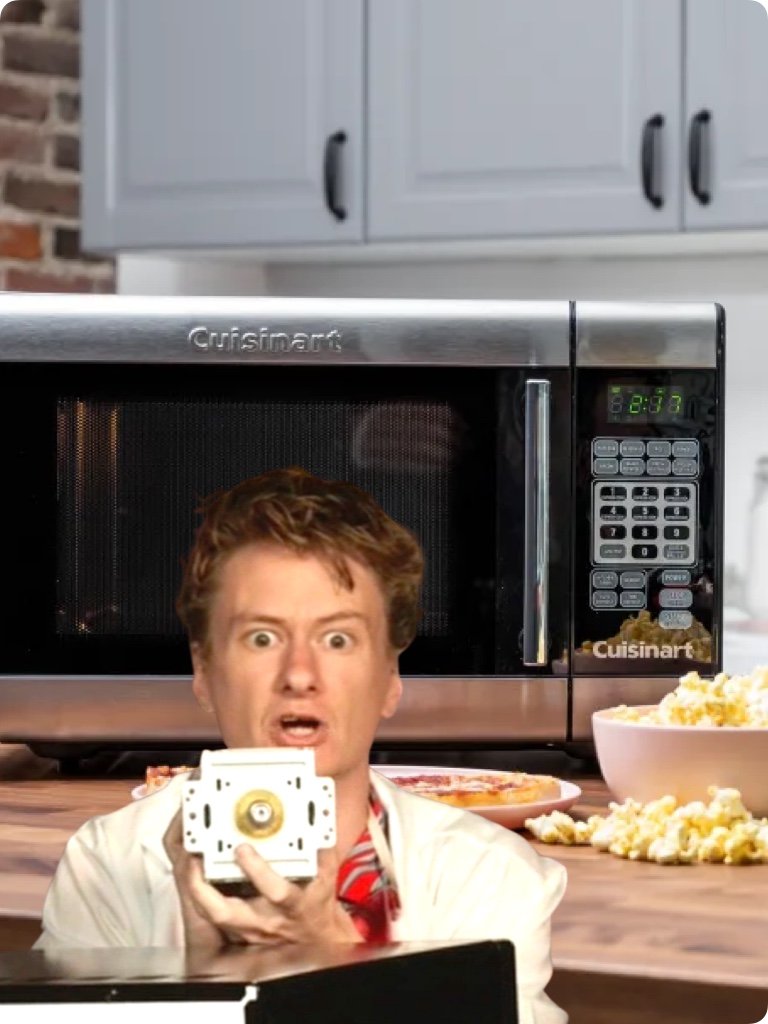Ask Tappity: Science Questions for Kids > How Do Microwaves Work?
How Do Microwaves Work?
Have you ever popped a bag of popcorn and wondered exactly what was going on in there? Watch this video to find out, or read our explanation below!
Microwaves Are a Type of Electromagnetic Radiation
Electromagnetic radiation - it sounds real science-y, but there’s lots of everyday examples of it, like light! And radio waves. Electromagnetic radiation is generated when electrons or protons move around (usually electrons). It's often thought of as a wave - sort of like electrons moving around and making tiny ripples in an invisible pond that we’re all immersed in. Those waves can be big and long, or short and tiny, or anywhere in between. Your microwave oven produces a type of electromagnetic radiation called microwaves, which are just a little shorter than radio waves.
The Magnetron
Inside the heaviest part of your microwave, there’s a device that looks like this, and it's called a magnetron. The magnetron is what generates the microwaves. Microwaves can be harmful to humans, but don’t worry - the metal inside of the oven traps those microwaves, so that instead of escaping, they bounce back and forth. That’s all a microwave oven is - a magnetron with a metal box to trap the microwaves it produces. Along with a clock, and maybe a popcorn button.
Microwaves Spin Water Molecules
Ok, but how exactly do these microwaves cook your food? Well, microwaves just happen to be the perfect size to pass through almost everything except water molecules. So they penetrate all the way inside your food, bumping into all the water molecules on the way, making them spin around. All that spinning generates friction against the other molecules, heating up your food!
Microwave Facts for Kids
Got microwave questions? We’ve got microwave answers!
-
Microwave ovens are specifically sized so that the microwave reflects back to perfectly align with itself, creating spots in the oven with much larger fluctuations than others. You can find these spots by putting a tray covered in grated cheese into your microwaves - the spots that melt are the hottest spots!
-
Microwave heating generates a lot of steam, which removes water from food, resulting in a rubbery texture.
-
Microwaves have cold and hot spots on the inside, due to the deliberate reflection of the microwaves. That’s why they have rotating plates. To evenly cook food, it can help to rotate it often.
-
Not really - even though they go through lots of things, microwaves still cook your food from the outside in, for the most part. That’s why you can still end up with a frozen center. To combat this, you can try letting your food sit for a bit after microwaving, to allow the heat to move from the outside to the center.
-
For the most part, the power setting just regulates how frequently the magnetron is turned on and off. Turning it off more frequently will cook food more slowly, but allow more of it to cook by convection (heat moving from one part of the food to another).
More Answers to Science Questions from Kids
What was the Big Bang? How do fish breathe? The Tappity Science Library has interactive lessons with answers to those questions and more!
Want Even More Science for Kids?
Dive into Tappity, the world’s largest interactive K-5 science library. Find everything from penguins to planets and even protozoa! So whether you’re an early engineer, a budding biologist, or an aspiring astronaut, you'll be sure to discover something new just for you.

























